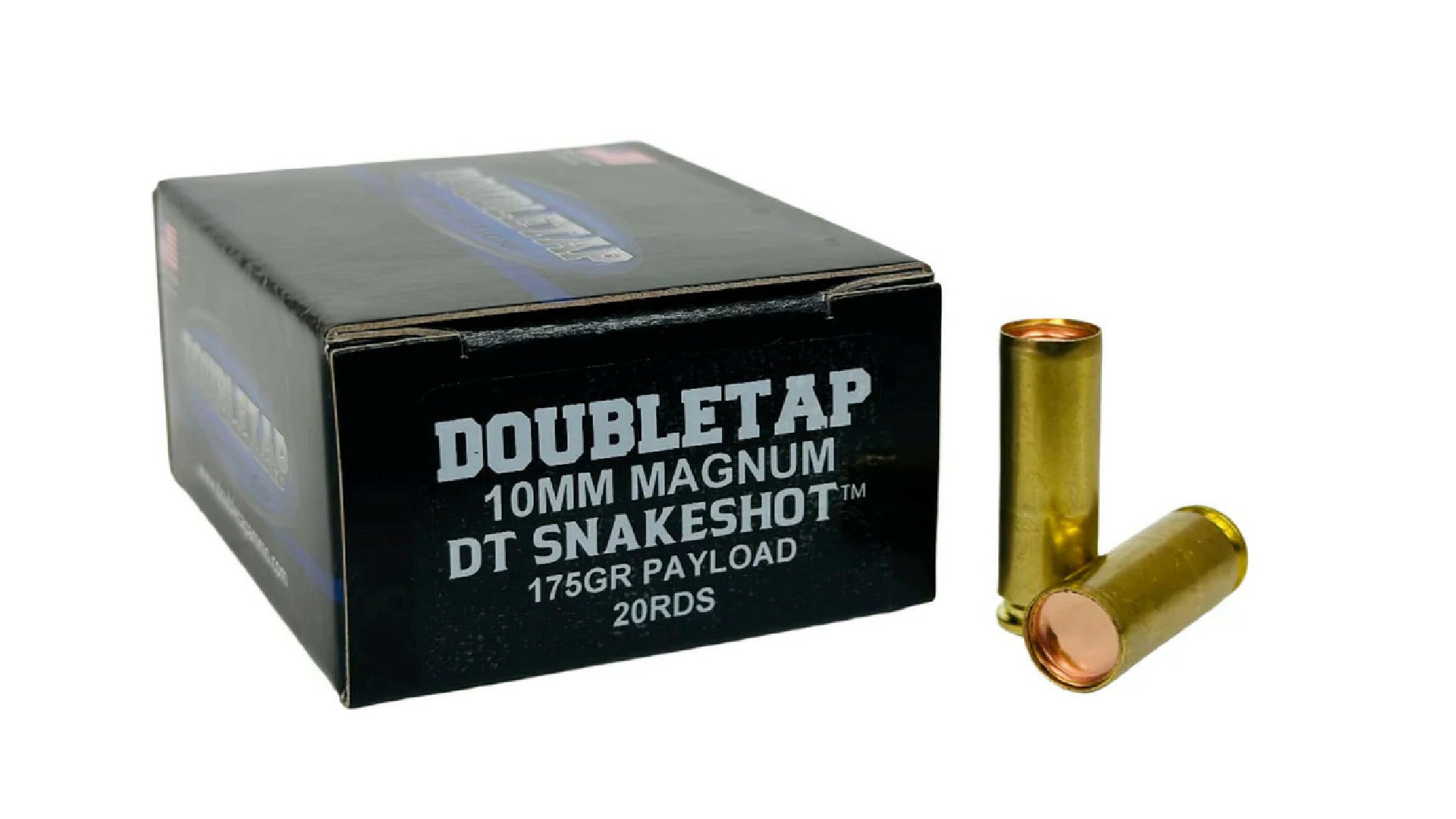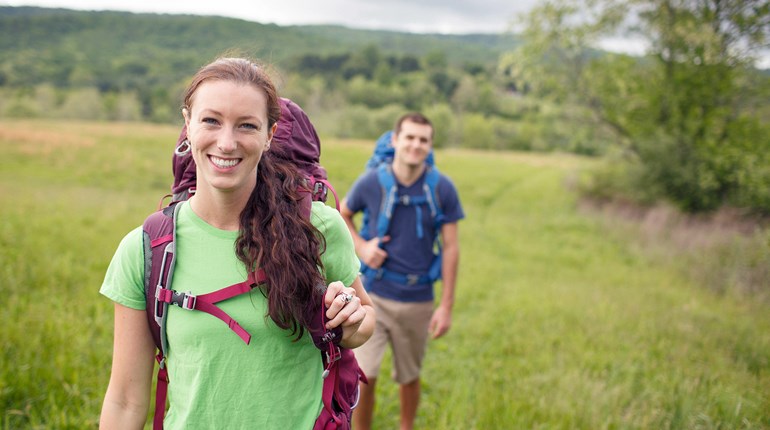
When I was much younger, I believed the old wives’ tale that water running over stones would purify itself. So, when I was hunting and came to a stream, I flopped down and drank. I got away with it for years—until I didn’t.
I was tracking a bull elk high in the Montana mountains. I was extremely thirsty, and when I came to a mountain stream, I kicked a hole in the ice and drank the water. It was fantastic. If you could bottle and sell how that water tasted, you would become very rich. Who knew giardia could taste great?

Two weeks later, I was in the middle of my home state’s deer season and so sick I was afraid I wouldn’t die. This was years ago; my Vermont doctor had never seen a case and the test was notoriously unreliable. Therefore, he misdiagnosed the problem and it dragged on for more than a month. I was pretty sure I was going to get my wish to die. If the doctor hadn’t cured it, mostly by accident, I might have.
Giardia is only one of many nasty things living in water that can make you sick. You can be infected with a number of water-borne nightmares such as cryptosporidiosis, protozoa, parasitic worms, cholera, typhoid, brain and liver flukes or any number of viruses.

I won’t scare you with the entire list or the details of what happens if you get sick, but it’s safe to say that even in a wilderness situation, no water source should be considered safe. You simply cannot know what is happening upstream. Even underground water like springs can be contaminated.
Why risk your hunt and your health to something so easily prevented? There are multiple approaches to creating safe drinking water. Here is a look at the good, bad and ugly of each of them. Hunters need purified drinking water in base camp and in the field. The options below cover both. First and foremost, pre-filter any water to remove chunks and debris. Coffee filters work great for this and are inexpensive.
Boiling
Perhaps the best-known and easiest way to deal with contaminated water is by boiling it, but even that alone is not 100 percent safe. It uses a lot of energy, which may be needed for other uses, and boiling makes water tasteless and flat. Yet, this is the cheapest and easiest way to make your water safe to drink.
Boiling will kill bacteria and other disease-causing microorganisms like giardia and cryptosporidium. At high elevations, though, the boiling point temperature of water drops. This reduces the time and energy required to bring water to a boil, but can increase the duration of boiling time required to kill most pathogens. To be sure, boil water for one minute at sea level and three minutes for altitudes above 6,500 feet.
Although they are rare, there are some pathogen spores that must be heated to 244°F to kill them. This can only be achieved by using a pressure cooker, as regular boiling will not heat water past 212°F at sea level. So, as mentioned above, boiling is not a 100 percent effective solution. Also, pollutants, chemicals and heavy metal contamination will not be removed by boiling. Still, in a wilderness setting where the water is typically fairly safe to start, boiling is a good option.

Chemicals
Chemicals used to purify drinking water are usually iodine or chlorine-based. Effective chemical additives can kill off the bad critters in water, but there’s a downside to all of them. Some of them are not recommended for long-term use, as they can have a negative, accumulative effect on the human body. Additionally, most of them make water taste bad.
Clorox bleach is an inexpensive and readily available source for chlorine-based water purification. One gallon of Clorox Regular bleach will treat up to 3,800 gallons of drinking water. Use half a teaspoon of bleach per five gallons of water. If the water is cloudy, double the recommended dosage of bleach.
It’s always a good idea to pre-filter the water. Even something like a T-Shirt removes a lot of the chunks and debris. Pour the clear water into an uncontaminated container and add bleach (avoid scented bleach or bleach with additives) per the indicated ratio. Mix well and wait 30 minutes. The water should have a slight bleach odor. If not, repeat the dose and wait 15 minutes, then smell it again. The bleach must be fresh for best use and results.
It’s important not to pour purified water into contaminated containers. Sanitize water jugs first with a stronger Clorox solution. You can also sanitize dishes, pots and utensils with Clorox bleach. To sanitize containers and utensils, mix 1 tablespoon of bleach with one gallon of water. Always wash and rinse items first, then let them soak in the bleach solution for 2 minutes, drain and air dry.
The old chlorine-based Halazone tablets that were commonly used during World War II by U.S. soldiers for portable water purification are still around and still work.

The two-part Aquamira Water Treatment Drops system uses chlorine dioxide, which is what municipal water systems have used for years, so it’s safe to drink as far as anybody knows. This is very popular with backpackers because the drops weigh far less than a water filter.
You to mix drops from two different bottles, then use the result to treat your water. They’re a good choice to carry in your pack while hunting, but can be expensive for high-volume use, as in a base camp. Also, as with any chemical treatment, it takes time to work. I have used Aquamira while on backcountry hunting trips and have gotten into trouble with it because I failed to follow directions properly. I was packing out a Dall sheep and was very thirsty; I filled my water bottle from a small stream that was draining a lot of sheep country. I added the Aquamira drops, but was so thirsty I failed to wait the recommended time for them to work before drinking the water. I had a stomach bug for the next several days as a result.
Aquatabs are chlorine-based water purifier tablets with the active ingredient sodium dichloroisocyanurate or troclosene sodium.

Potable Aqua iodine tablets are an iodine-based treatment. I used them in Zimbabwe along with a filter. Other than the iodine staining my plastic water bladders, I had no issues. I drank a lot of treated water from questionable sources with no ill effects. I have also used it in conjunction with filters in Alaska to drink water known to be infested with giardia and was very pleased with the results, which is to say I didn’t get sick.
Iodine kills many, but not all, of the most common pathogens present in natural fresh water sources. Because iodine tastes awful, they sell a kit with two bottles of tablets, the second of which has ascorbic acid that helps to remove the taste. It’s not a good idea to use this much iodine in your water long-term, but for a few days or weeks it’s fine.
The trouble with chemicals is that most are not 100 percent effective against cryptosporidium and giardia, as they have a hard outer shell that is resistant to chemicals. The best approach is to use both chemicals (or boiling) and a high-quality filter that will trap anything bigger than .2 microns.

Ultraviolet Purification
Ultraviolet (UV) light works on DNA and prevents microbes from reproducing. Without reproduction, the microbes become far less dangerous. Water treated with UV still has microbes present, but their means of reproduction are turned off. Anything organic is shut down and the water is safe to drink.
However, exposure to visible light for any significant period of time can reverse the process and render the water unsafe to drink. Therefore, UV-treated water must not be exposed to visible light for any significant period of time after UV treatment and before consumption. Pre-filtering is important, as UV works best with clear water. The upside is UV adds nothing to the water for you to ingest. Also, the amount of water it can handle is almost limitless; as long as the unit remains working, you’ll never run out.

SteriPEN is the best-known company for consumer UV water treatment. Most of their units run on batteries of some sort; I had one that took AAA batteries. In addition to going dead at the wrong time, I left them in during the offseason and they corroded and damaged my unit beyond repair. My new SteriPen Ultra is rechargeable, and many outdoor products offer charging ports today, so it’s easy to keep this thing working without worrying about spare batteries.
Filtration
Water filters come in two basic forms. The first uses a pump to force the water through the filter, while the other relies on gravity to pass water through the filter.
I’ve carried a pump-style water filter everywhere I travel for many years. In remote wilderness camps, I don’t drink any water unless I personally filter it before consumption. The exception is coffee, if the water is boiled. Ever outfitter I’ve hunted with insists that their water is safe, but I’m not willing to take that chance. Years before I started this policy, I was in a remote elk camp that got its water from a spring in a low-lying area surrounded by a horse pasture. Care to guess what was draining into the water supply? The guides were all immune from drinking from the spring for years, but I wasn’t. Before I discovered the problem and quit drinking the water, I had a few days of misery.
When traveling—especially in Third World countries—I even filter the water in the hotels. Tap water is not always safe. Montezuma can take his revenge on somebody else, I’ve paid those dues. Even here in the U.S. the filters help remove the chlorine taste from tap water.

Portable filters are designed for backpackers, hunters and other people on the move. They’re light and fit easily in a backpack. My advice is to bring it with you every day, even if you don’t think you’ll need it, because sooner or later you will. My hunting group got lost in Zimbabwe once in 115°F heat and soon ran out of water. After hours of walking, we came to a river bed that was dry except for a small pool that was filled with green slime and baboon droppings. The trackers who had lived in the bush all their lives drank from that, straining the solids through their teeth. The PH dug into the sand about ten feet away and drank the water that boiled up. It was clear to me where that water came from and I abstained. I endured many more hours in the intense heat and sun waiting for the trackers to find the truck and come back for us. I would have traded my house for a water filter that day.
If you’re in a wilderness situation—even in most rural locations—water that is filtered is pretty safe to drink. If you have a filter with you, particularly if you also use ultraviolet or chemical purifications in conjunction with it, the treated water will be safe to drink from most unfamiliar sources.
Portable pump filters can remove pathogens down to 0.2 micron in size. The best filters remove most bacteria and protozoa, but not viruses, which are small enough to pass through. For 100 percent safety, disinfection by chemicals or ultraviolet light is still required after filtration. Viruses are not usually an issue in North American hunting situations where the filter alone is usually adequate, but, if you’re in any Third World country, assume the water has viruses.
 A gravity-fed, high-capacity filter will work at making safe water all day if it is tended well. These work well for a camp-based operation where water can be filtered into a large holding tank or at the very least a clean five-gallon jug. Recently, I was camping on a river and the Katadyn Base Camp Pro filter provided safe drinking water as long as we kept it filled it filtered water at a rate of 2 liters per minute.
A gravity-fed, high-capacity filter will work at making safe water all day if it is tended well. These work well for a camp-based operation where water can be filtered into a large holding tank or at the very least a clean five-gallon jug. Recently, I was camping on a river and the Katadyn Base Camp Pro filter provided safe drinking water as long as we kept it filled it filtered water at a rate of 2 liters per minute.
Filters like LifeStraw work like a straw to drink directly from the water source, as well as water-filtering bottles that you fill and filter the water as you drink. They’re inexpensive and easy to carry, but in my experience, they’re difficult to use. I much prefer to filter the water into my carry bottle and drink without my eyes bulging out from the effort. Still, I often have a filter straw in my backpack, just in case.
Why risk your hunting season? Use any of the above methods make sure the water you drink does not contain hitchhikers that will make you sick.



































